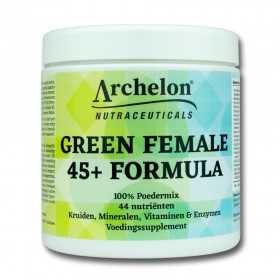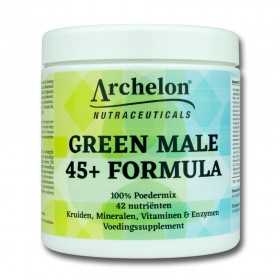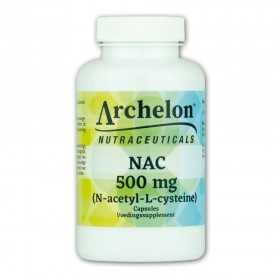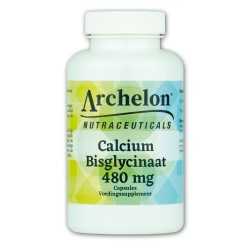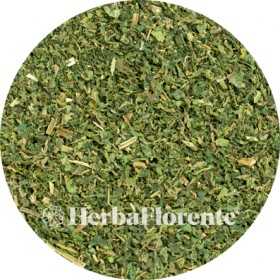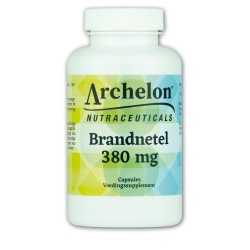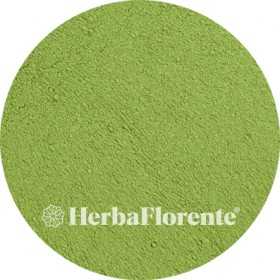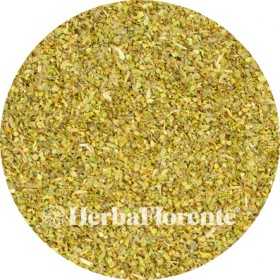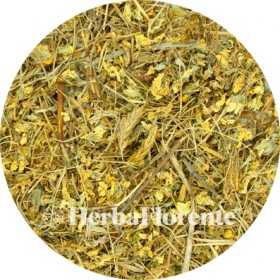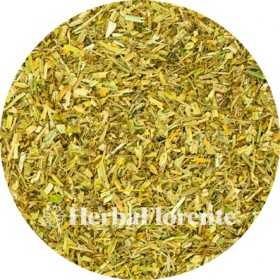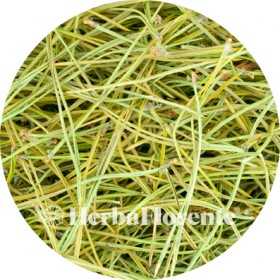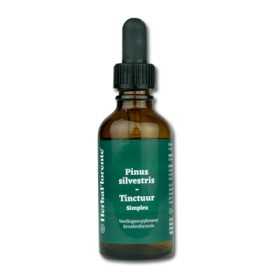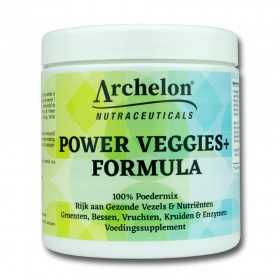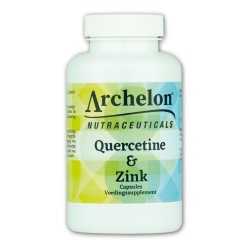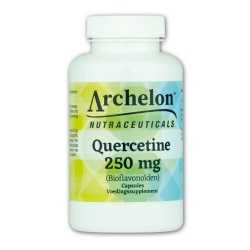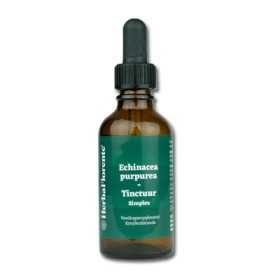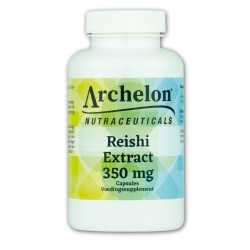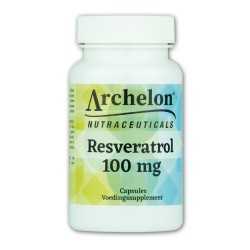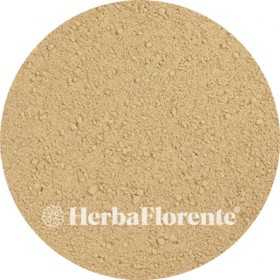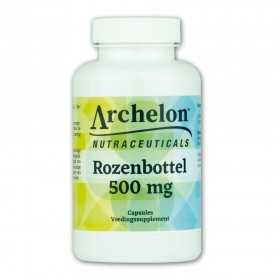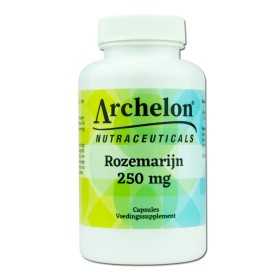Fatigue
There are 180 products.
NAC (N-Acetyl-L-Cysteine) - 500 mg
N-acetyl-cysteine (NAC) is a form of the sulfur-containing semi-essential amino acid L-cysteine. It is found in dairy, meat, fruit and vegetables, but this is often insufficient and can best be supplemented through supplementation. The advantage that N-acetyl-cysteine has over cysteine is that it is better and more easily absorbed by our body. Furthermore, N-acetyl-cysteine supports production of the important tripeptide glutathione in our body. Glutathione plays a role in protecting our cells against oxidative stress.
€24.95
Nettle (Herb) - Urticae dioica
The nettle (Urtica dioica) is a powerful and versatile plant that occurs in many places, despite its irritating property to the touch. Known for its culinary uses, such as nettle soup and tea, the nettle is also known for its health benefits.
Nettle leaf is a traditional herbal medicine with various applications. It contributes to healthy skin, gives shine to the hair and strengthens the nails. In addition, it can help soothe the respiratory tract and maintain proper fluid balance. It also provides support to the heart and blood vessels.
Nettle leaf is a traditional herbal medicine with various applications. It contributes to healthy skin, gives shine to the hair and strengthens the nails. In addition, it can help soothe the respiratory tract and maintain proper fluid balance. It also provides support to the heart and blood vessels.
€2.00
From: €2.00
Nettle - 380 mg
The nettle (Urtica dioica) is a powerful and versatile plant that occurs in many places, despite its irritating property to the touch. Known for its culinary uses, such as nettle soup and tea, the nettle is also known for its health benefits.
Originally from Africa and Asia, the plant goes by the Latin name Urtica dioica and has been used for centuries. In herbalism, not only the dried leaves, but also the dried roots are used.
Nettle leaf is a traditional herbal medicine with various applications. It contributes to healthy skin, gives shine to the hair and strengthens the nails. In addition, it can help soothe the respiratory tract and maintain proper fluid balance. It also provides support to the heart and blood vessels.
Originally from Africa and Asia, the plant goes by the Latin name Urtica dioica and has been used for centuries. In herbalism, not only the dried leaves, but also the dried roots are used.
Nettle leaf is a traditional herbal medicine with various applications. It contributes to healthy skin, gives shine to the hair and strengthens the nails. In addition, it can help soothe the respiratory tract and maintain proper fluid balance. It also provides support to the heart and blood vessels.
€17.95
Nettle - Urticae dioica
The nettle (Urtica dioica) is a powerful and versatile plant that occurs in many places, despite its irritating property to the touch. Known for its culinary uses, such as nettle soup and tea, the nettle is also known for its health benefits.
Nettle leaf is a traditional herbal medicine with various applications. It contributes to healthy skin, gives shine to the hair and strengthens the nails. In addition, it can help soothe the respiratory tract and maintain proper fluid balance. It also provides support to the heart and blood vessels.
Nettle leaf is a traditional herbal medicine with various applications. It contributes to healthy skin, gives shine to the hair and strengthens the nails. In addition, it can help soothe the respiratory tract and maintain proper fluid balance. It also provides support to the heart and blood vessels.
€2.40
From: €2.40
Nettle Tincture - Urticae dioica Tincture
Single herbal tincture made with dried herb of Urticae dioica (Nettle).
The nettle (Urtica dioica) is a powerful and versatile plant that occurs in many places, despite its irritating property to the touch. Known for its culinary uses, such as nettle soup and tea, the nettle is also known for its health benefits.
Nettle leaf is a traditional herbal medicine with various applications. It contributes to healthy skin, gives shine to the hair and strengthens the nails. In addition, it can help soothe the respiratory tract and maintain proper fluid balance. It also provides support to the heart and blood vessels.
The nettle (Urtica dioica) is a powerful and versatile plant that occurs in many places, despite its irritating property to the touch. Known for its culinary uses, such as nettle soup and tea, the nettle is also known for its health benefits.
Nettle leaf is a traditional herbal medicine with various applications. It contributes to healthy skin, gives shine to the hair and strengthens the nails. In addition, it can help soothe the respiratory tract and maintain proper fluid balance. It also provides support to the heart and blood vessels.
€10.95
Oregano - Origani vulgaris
Oregano (Origanum vulgare) also known as wild marjoram, is a special herb that has been used for thousands of years for its beneficial properties. It supports healthy intestinal flora and promotes digestion. In addition, oregano has benefits for the heart, blood vessels and blood pressure.
The herb belongs to the Lamiaceae family, which also includes rosemary, thyme and mint. Oreganois is particularly rich in carvacrol, which gives it its characteristic spicy and slightly bitter taste. The most vigorous form of oregano grows in Mediterranean mountain areas, thriving on calcareous soil. During the spring, wild oregano blooms and residents go into the mountains to collect these aromatic herbs.
The herb belongs to the Lamiaceae family, which also includes rosemary, thyme and mint. Oreganois is particularly rich in carvacrol, which gives it its characteristic spicy and slightly bitter taste. The most vigorous form of oregano grows in Mediterranean mountain areas, thriving on calcareous soil. During the spring, wild oregano blooms and residents go into the mountains to collect these aromatic herbs.
€2.80
From: €2.80
Pansy, Herb trinit (Flower) - Viola tricolor
Out-of-Stock
The pansy (Viola tricolor) belongs to the violet family (Violaceae) and is native to Europe, from Lapland to the Mediterranean, and even in Siberia.
This plant, which is an annual but can sometimes be perennial, grows to a height of 30 cm and has roots that can go up to 45 cm deep. The flowering period extends from May to October. The flowers are at least 1 cm wide, but usually larger, with an average diameter of 1.5 cm.
The pansy was first described as a medicinal herb by Rembert Dodoens in 1554. It was traditionally used for childhood diseases and respiratory diseases. In England it was popular for treating heart disease, chest cramps and pleurisy
This plant, which is an annual but can sometimes be perennial, grows to a height of 30 cm and has roots that can go up to 45 cm deep. The flowering period extends from May to October. The flowers are at least 1 cm wide, but usually larger, with an average diameter of 1.5 cm.
The pansy was first described as a medicinal herb by Rembert Dodoens in 1554. It was traditionally used for childhood diseases and respiratory diseases. In England it was popular for treating heart disease, chest cramps and pleurisy
€7.00
From: €7.00
Pansy, Herb trinit Herb - Viola tricolor - Cut
The pansy (Viola tricolor) belongs to the violet family (Violaceae) and is native to Europe, from Lapland to the Mediterranean, and even in Siberia.
This plant, which is an annual but can sometimes be perennial, grows to a height of 30 cm and has roots that can go up to 45 cm deep. The flowering period extends from May to October. The flowers are at least 1 cm wide, but usually larger, with an average diameter of 1.5 cm.
The pansy was first described as a medicinal herb by Rembert Dodoens in 1554. It was traditionally used for childhood diseases and respiratory diseases. In England it was popular for treating heart disease, chest cramps and pleurisy
This plant, which is an annual but can sometimes be perennial, grows to a height of 30 cm and has roots that can go up to 45 cm deep. The flowering period extends from May to October. The flowers are at least 1 cm wide, but usually larger, with an average diameter of 1.5 cm.
The pansy was first described as a medicinal herb by Rembert Dodoens in 1554. It was traditionally used for childhood diseases and respiratory diseases. In England it was popular for treating heart disease, chest cramps and pleurisy
€2.00
From: €2.00
Passionflower - Passiflora incarnata
Passionflower (Passiflora incarnata) is known as a traditional herb that has long been used to reduce stress and inner turmoil. Native people of Central and North America used various parts of the plant to relax and sleep better. It is a natural sedative.
Although the blue passion flower originally only grew in America, it can now be found almost everywhere. The flowers of the Passiflora incarnata are not only beautiful to look at, but also edible. In the fall, passion fruits grow and the leaves are also edible. These leaves are rich in tannins, flavanols, saponins, choline and magnesium.
Although the blue passion flower originally only grew in America, it can now be found almost everywhere. The flowers of the Passiflora incarnata are not only beautiful to look at, but also edible. In the fall, passion fruits grow and the leaves are also edible. These leaves are rich in tannins, flavanols, saponins, choline and magnesium.
€2.40
From: €2.40
Pine (Needles) - Pinus silvestris
The Scots pine (Pinus sylvestris) belongs to the pine family (Pinaceae) and can reach a respectable age of 200 to 300 years, thanks to its rich resin content.
In phytotherapy, the needles and buds of the Scots pine are used because of their content of tannins, flavonoids and vitamins. The oleoresin of this tree is rich in turpentine. This species is known for its abundant monoterpenes, such as α-pinene, β-pinene and limonene, which form an essential oil with expectorant, antiseptic, decongestant, venolymphatic and anti-inflammatory properties.
In phytotherapy, the needles and buds of the Scots pine are used because of their content of tannins, flavonoids and vitamins. The oleoresin of this tree is rich in turpentine. This species is known for its abundant monoterpenes, such as α-pinene, β-pinene and limonene, which form an essential oil with expectorant, antiseptic, decongestant, venolymphatic and anti-inflammatory properties.
€2.00
From: €2.00
Pine (Seedlings) - Pinus silvestris
The Scots pine (Pinus sylvestris) belongs to the pine family (Pinaceae) and can reach a respectable age of 200 to 300 years, thanks to its rich resin content.
In phytotherapy, the needles and buds of the Scots pine are used because of their content of tannins, flavonoids and vitamins. The oleoresin of this tree is rich in turpentine. This species is known for its abundant monoterpenes, such as α-pinene, β-pinene and limonene, which form an essential oil with expectorant, antiseptic, decongestant, venolymphatic and anti-inflammatory properties.
In phytotherapy, the needles and buds of the Scots pine are used because of their content of tannins, flavonoids and vitamins. The oleoresin of this tree is rich in turpentine. This species is known for its abundant monoterpenes, such as α-pinene, β-pinene and limonene, which form an essential oil with expectorant, antiseptic, decongestant, venolymphatic and anti-inflammatory properties.
€2.80
From: €2.80
Pine Tincture - Pinus silvestris Tincture
Single herbal tincture made with dried needle of Pinus silvestris (Pine).
The Scots pine (Pinus sylvestris) belongs to the pine family (Pinaceae) and can reach a respectable age of 200 to 300 years, thanks to its rich resin content.
In phytotherapy, the needles and buds of the Scots pine are used because of their content of tannins, flavonoids and vitamins. The oleoresin of this tree is rich in turpentine. This species is known for its abundant monoterpenes, such as α-pinene, β-pinene and limonene, which form an essential oil with expectorant, antiseptic, decongestant, venolymphatic and anti-inflammatory properties.
The Scots pine (Pinus sylvestris) belongs to the pine family (Pinaceae) and can reach a respectable age of 200 to 300 years, thanks to its rich resin content.
In phytotherapy, the needles and buds of the Scots pine are used because of their content of tannins, flavonoids and vitamins. The oleoresin of this tree is rich in turpentine. This species is known for its abundant monoterpenes, such as α-pinene, β-pinene and limonene, which form an essential oil with expectorant, antiseptic, decongestant, venolymphatic and anti-inflammatory properties.
€9.95
Power Berries+ Formula
Our Power Berries+ Formula provides a balanced blend of nutrients specially formulated to support your overall health. This unique formula is packed with healthy fiber and essential nutrients, including polyphenols, phytonutrients, antioxidants and natural vitamins.
€57.50
Power Veggies+ Formula
Our Power Veggies+ Formula provides a balanced blend of essential nutrients to support your overall health. With an abundance of healthy fibers and nutrients, is Power Veggies+ Formula specially formulated to nourish and glow your body.
€59.50
PQQ (Pyrroloquinoline quinone) - 20 mg
PQQ, abbreviated for Pyrroloquinoline quinone, is a substance similar to a B vitamin and mainly found in plants. It is also sometimes called 'super Q10' because of its similar properties. Although PQQ has been around for a long time, it was only recently discovered. This water-soluble substance plays a role in enzymatic reactions and supports enzymes in their function. In addition, PQQ has various other properties.
A lot of research is currently being done into the exact composition and function of PQQ. This substance occurs naturally in various foods, such as spinach, kiwi, soy beans (especially green and fermented soy beans such as nattō), mustard and tofu. Green tea is also a rich source of PQQ.
A lot of research is currently being done into the exact composition and function of PQQ. This substance occurs naturally in various foods, such as spinach, kiwi, soy beans (especially green and fermented soy beans such as nattō), mustard and tofu. Green tea is also a rich source of PQQ.
€42.95
Quercetin & Rutin (Bioflavonoids)
Quercetin is a flavonoid, also called bioflavonoid. This natural plant compound is found in various plants, fruits and vegetables. Flavonoids are responsible for the vibrant colors (pigments) in these plants and come in various shades. They play a crucial role in plant metabolism, regulate growth, and provide protection against UV light, oxidation and heat.
Rutin, also known as a flavonoid or bioflavonoid, is a naturally occurring substance in vegetables, fruits, herbs and plants. It is known for its vibrant pigmentation and can have different colors. Rutin plays several important roles in plants, such as regulating growth, protecting against UV radiation, oxidation and heat, and maintaining plant metabolism.
Rutin, also known as a flavonoid or bioflavonoid, is a naturally occurring substance in vegetables, fruits, herbs and plants. It is known for its vibrant pigmentation and can have different colors. Rutin plays several important roles in plants, such as regulating growth, protecting against UV radiation, oxidation and heat, and maintaining plant metabolism.
€32.95
Quercetin & Zinc
Quercetin is a flavonoid, also called bioflavonoid. This natural plant compound is found in various plants, fruits and vegetables. Flavonoids are responsible for the vibrant colors (pigments) in these plants and come in various shades. They play a crucial role in plant metabolism, regulate growth, and provide protection against UV light, oxidation and heat.
Zinc is available in different forms. Zinc bisglycinate has a very good bioavailability. It is a chelated form of zinc bound to two (bis) molecules of the amino acid glycine which has more benefits for the body. Zinc has a very wide range of action and is involved in many body processes. Zinc is essential for the activity of more than 300 enzymes that have the zinc ion as a cofactor.
Zinc is available in different forms. Zinc bisglycinate has a very good bioavailability. It is a chelated form of zinc bound to two (bis) molecules of the amino acid glycine which has more benefits for the body. Zinc has a very wide range of action and is involved in many body processes. Zinc is essential for the activity of more than 300 enzymes that have the zinc ion as a cofactor.
€34.95
Quercetin - 250 mg
Quercetin is a flavonoid, also called bioflavonoid. This natural plant compound is found in various plants, fruits and vegetables. Flavonoids are responsible for the vibrant colors (pigments) in these plants and come in various shades. They play a crucial role in plant metabolism, regulate growth, and provide protection against UV light, oxidation and heat.
Quercetin belongs to a group of plant compounds known as flavonoids. Many flavonoids contribute to the coloring of plants to some extent. In addition, quercetin is a powerful antioxidant. It can be well combined with other antioxidant flavonoids, such as rutin and vitamin C, for an enhanced effect.
Quercetin belongs to a group of plant compounds known as flavonoids. Many flavonoids contribute to the coloring of plants to some extent. In addition, quercetin is a powerful antioxidant. It can be well combined with other antioxidant flavonoids, such as rutin and vitamin C, for an enhanced effect.
€27.95
Red Coneflower Tincture - Echinacea purpurea Tincture
Single herbal tincture made with dried herb & root of Echinacea purpurea (Red Coneflower).
Purple coneflower (Echinacea purpurea) is one of the most widely grown and used herbs in the world because of its positive influence on the immune system. The genus name 'echinacea' is derived from the Greek word 'echinos', meaning 'hedgehog', because of the spiky flower cone. Since the beginning of the last century, much research has been done into Echinacea purpurea in Europe.
Purple coneflower (Echinacea purpurea) is one of the most widely grown and used herbs in the world because of its positive influence on the immune system. The genus name 'echinacea' is derived from the Greek word 'echinos', meaning 'hedgehog', because of the spiky flower cone. Since the beginning of the last century, much research has been done into Echinacea purpurea in Europe.
€12.95
Reishi Extract - 350 mg
Reishi (Ganoderma lucidum) has been considered one of the most important mushrooms in Japanese and Chinese herbalism for more than two thousand years. This mushroom supports the immune system and promotes healthy circulation.
Today, reishi mushrooms are grown in greenhouses under controlled conditions, which ensures a quality equivalent to that of wild reishi. Thanks to these cultivation methods, reishi is now widely accessible. The mushroom is rich in several nutrients, including iron, selenium, antioxidants, polysaccharides, peptides and triterpenoids.
Today, reishi mushrooms are grown in greenhouses under controlled conditions, which ensures a quality equivalent to that of wild reishi. Thanks to these cultivation methods, reishi is now widely accessible. The mushroom is rich in several nutrients, including iron, selenium, antioxidants, polysaccharides, peptides and triterpenoids.
€34.95
Resveratrol - 100 mg
Resveratrol is a naturally occurring substance in Japanese knotweed (Polygonum cuspidatum). It belongs to polyphenols, a group of organic molecules mainly found in vegetables, fruits, herbs and other plants. Polyphenols consist of different phenolic groups and include substances such as simple phenols, coumarins, flavonoids and anthocyanins. They play a crucial role in the metabolism of plants, protect the plant, regulate growth and provide protection against UV light, oxidation and heat.
Resveratrol has beneficial properties for protecting healthy cells and tissues in the body and is also good for the heart and blood vessels.
Resveratrol has beneficial properties for protecting healthy cells and tissues in the body and is also good for the heart and blood vessels.
€32.95
Rose Root - Rhodiola rosea
Out-of-Stock
Rose root (Rhodiola rosea) also known as the 'golden root', is a succulent plant that thrives in cold, rocky areas around the world. The roots emit a characteristic scent of roses. This herb has long been used in herbal medicine.
It contains protective antioxidants that help our body cells. Rose root supports both physical and mental balance in our body. It helps keep the mind clear, improves mood and promotes concentration. Some of the bioactive compounds in rose root include rosavine and salidroside, which are thought to be responsible for Rhodiola rosea's calming and uplifting effects.
It contains protective antioxidants that help our body cells. Rose root supports both physical and mental balance in our body. It helps keep the mind clear, improves mood and promotes concentration. Some of the bioactive compounds in rose root include rosavine and salidroside, which are thought to be responsible for Rhodiola rosea's calming and uplifting effects.
€20.00
From: €20.00
Rosehip - 500 mg
The dog rose (Rosa canina) is a native rose species in the Benelux, found in Europe, Northwest Africa and West Asia. This species has been introduced into North America.
After flowering, a rose hip develops, a fleshy flower base with nutty fruits inside. The rose hip is oval or ovoid, red-orange in color, and measures 1-2.5 cm long and 1-1.8 cm wide.
Rose hips are often used for making jam because of their high vitamin C content. They also contain carotene, vitamin B1 and vitamin B2.
After flowering, a rose hip develops, a fleshy flower base with nutty fruits inside. The rose hip is oval or ovoid, red-orange in color, and measures 1-2.5 cm long and 1-1.8 cm wide.
Rose hips are often used for making jam because of their high vitamin C content. They also contain carotene, vitamin B1 and vitamin B2.
€19.95
Rosemary - 250 mg
Rosemary (Rosmarinus officinalis L.) is a fragrant, compact shrub belonging to the Lamiaceae family. This versatile herb has been used for centuries for various purposes, both culinary and for health promotion. Originally from Mediterranean regions, the Rosmarinus officinalis displays lush blooms in spring with small, lavender blue flowers.
The name "rosemary" has its origins in the Latin "ros" (roris), meaning "dew", and "marinus", meaning "sea": "dew of the sea". Since ancient times, by both the ancient Greeks and Romans, Rosmarinus officinalis has been valued for its health-supporting properties. It helps with digestion, strengthens the immune system and contains antioxidants.
The name "rosemary" has its origins in the Latin "ros" (roris), meaning "dew", and "marinus", meaning "sea": "dew of the sea". Since ancient times, by both the ancient Greeks and Romans, Rosmarinus officinalis has been valued for its health-supporting properties. It helps with digestion, strengthens the immune system and contains antioxidants.
€19.95








